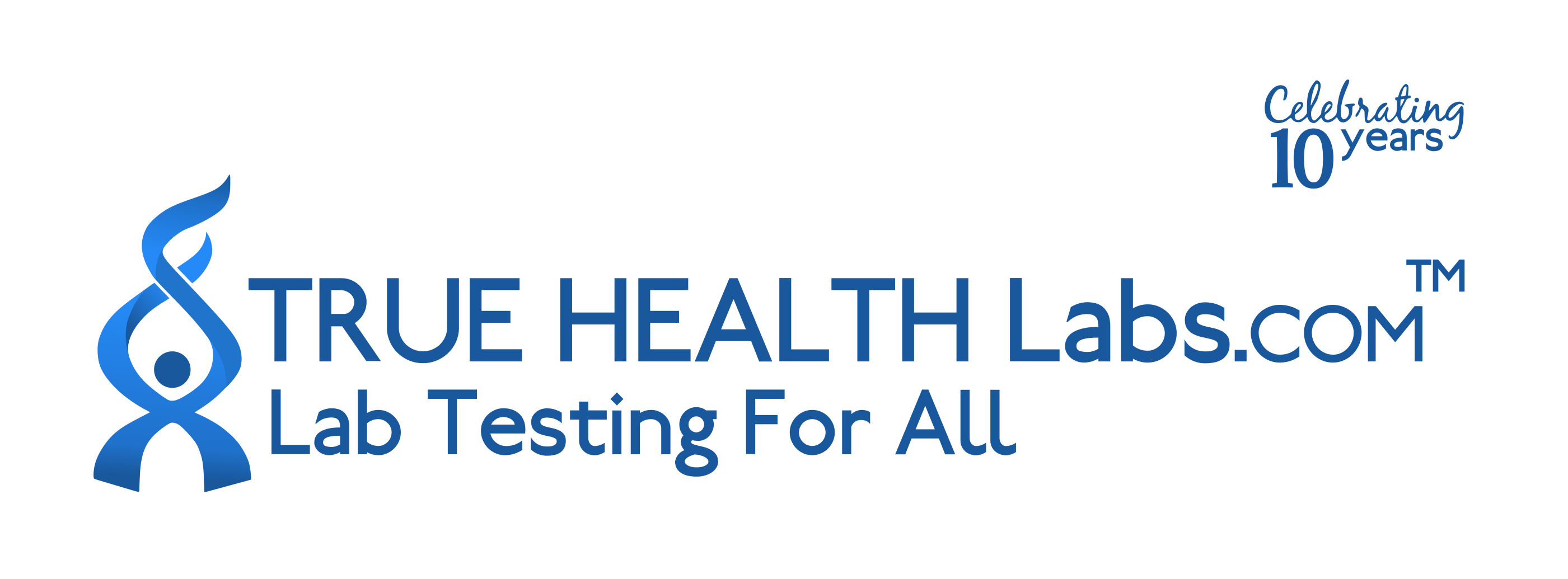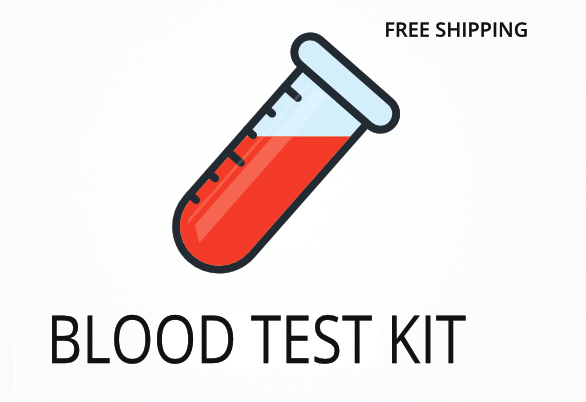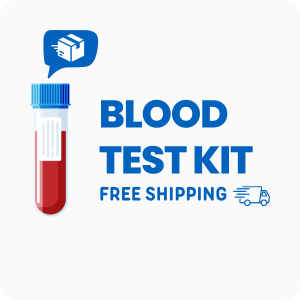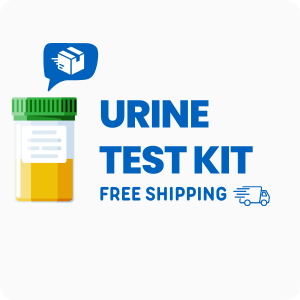Ordering the Pathogen-Associated Immune Reactivity Screen | Cyrex Array #12
Ordering the Pathogen-Associated Immune Reactivity Screen | Cyrex Array #12 helps identify immune responses to a wide range of bacteria, viruses, fungi, and parasites that may be linked to chronic symptoms. This test is especially useful for people with ongoing digestive issues, joint pain, skin rashes, or unexplained fatigue, as it checks for immune reactivity to 29 different pathogens. Interestingly, this test can also detect immune responses to environmental molds, which are often overlooked as a trigger for symptoms.
When ordering this test, you gain access to specific benefits:
- Detects immune reactions to common and uncommon pathogens, including bacteria, viruses, fungi, and parasites.
- Helps pinpoint possible triggers for symptoms like joint pain, digestive problems, and skin issues.
- Supports early identification of immune system imbalances before they progress.
- Assists in monitoring immune responses in people with autoimmune or inflammatory conditions.
- Provides a comprehensive report that can guide targeted treatment plans with your healthcare provider.
Who Should Consider Pathogen Immune Reactivity Screening
People who have tried multiple treatments for symptoms like brain fog, chronic pain, or digestive discomfort without clear answers may benefit from this screening. For example, someone who has persistent joint pain and skin rashes, despite negative results on standard tests, could use this test to uncover hidden immune triggers.
Ordering this test may also be helpful in these situations:
- Recurring digestive problems that do not improve with diet changes
- Unexplained fatigue or muscle aches lasting several months
- Skin rashes or eczema that flare up after travel or illness
- Joint pain that worsens after certain infections
- People with a family history of autoimmune conditions who want to check for immune reactivity to pathogens
Testing for immune reactivity to pathogens can reveal hidden triggers for symptoms, allowing for more targeted care and reducing the risk of ongoing inflammation. Delaying this test may allow immune reactions to continue unchecked, making it harder to identify the source of symptoms later.
Preparing for Pathogen-Related Immune Response Testing
Fasting is not required for this test, but you should review the kit instructions for any special steps. Always follow the directions provided by your doctor or healthcare practitioner to make sure your sample is collected and processed correctly.
Labs Included When Ordering Your Pathogen-Associated Immune Reactivity Screen | Cyrex Array #12
| Test Name | Reference Range | Significance | Low and High Levels of Pathogen-Associated Immune Reactivity Screen |
|---|---|---|---|
| Porphyromonas gingivalis | 0-19 | This marker checks for immune response to a bacteria linked to gum disease and possible joint inflammation. It can be connected to oral and systemic symptoms. | High levels mean your immune system is reacting to this oral bacteria, which may be linked to joint or gum issues.
Low levels mean there is little or no immune response to this bacteria. |
| Streptococcus mutans | 0-19 | This test looks for immune reactivity to a bacteria often found in dental cavities. It may also be linked to heart and joint symptoms. | High levels mean your immune system is responding to this bacteria, which could be related to dental or heart issues.
Low levels mean minimal immune response to this bacteria. |
| Helicobacter pylori | 0-19 | This marker detects immune response to a bacteria that can cause stomach ulcers and digestive discomfort. It is also linked to chronic gastritis. | High levels mean your immune system is reacting to this stomach bacteria, which may be linked to ulcers or stomach pain.
Low levels mean little or no immune response to this bacteria. |
| Campylobacter jejuni | 0-19 | This test checks for immune reactivity to a bacteria that can cause food poisoning and may be linked to nerve symptoms in some people. | High levels mean your immune system is responding to this bacteria, which may be linked to digestive or nerve symptoms.
Low levels mean minimal immune response to this bacteria. |
| Yersinia enterocolitica | 0-19 | This marker detects immune response to a bacteria that can cause intestinal infection and is sometimes linked to joint pain or autoimmune symptoms. | High levels mean your immune system is reacting to this bacteria, which may be linked to gut or joint symptoms.
Low levels mean little or no immune response to this bacteria. |
| Clostridium difficile | 0-19 | This test checks for immune reactivity to a bacteria that can cause severe diarrhea and gut inflammation, especially after antibiotics. | High levels mean your immune system is responding to this bacteria, which may be linked to gut symptoms.
Low levels mean minimal immune response to this bacteria. |
| Candida albicans | 0-19 | This marker detects immune response to a common yeast that can cause digestive, skin, or fatigue symptoms when overgrown. | High levels mean your immune system is reacting to this yeast, which may be linked to digestive or skin symptoms.
Low levels mean little or no immune response to this yeast. |
| Rotavirus | 0-19 | This test checks for immune reactivity to a virus that can cause severe diarrhea, especially in children, and may trigger gut symptoms in adults. | High levels mean your immune system is responding to this virus, which may be linked to gut symptoms.
Low levels mean minimal immune response to this virus. |
| Entamoeba histolytica | 0-19 | This marker detects immune response to a parasite that can cause diarrhea and abdominal pain, especially after travel. | High levels mean your immune system is reacting to this parasite, which may be linked to gut symptoms.
Low levels mean little or no immune response to this parasite. |
| Giardia lamblia | 0-19 | This test checks for immune reactivity to a parasite that can cause watery diarrhea and stomach cramps, often after drinking contaminated water. | High levels mean your immune system is responding to this parasite, which may be linked to digestive symptoms.
Low levels mean minimal immune response to this parasite. |
| Cryptosporidium | 0-19 | This marker detects immune response to a parasite that can cause diarrhea, especially in people with weakened immune systems. | High levels mean your immune system is reacting to this parasite, which may be linked to gut symptoms.
Low levels mean little or no immune response to this parasite. |
| Blastocystis hominis | 0-19 | This test checks for immune reactivity to a parasite that can cause digestive symptoms, though its role in illness is still being studied. | High levels mean your immune system is responding to this parasite, which may be linked to gut symptoms.
Low levels mean minimal immune response to this parasite. |
| Human HSP-60/Chlamydia HSP-60 | 0-19 | This marker detects immune response to heat shock proteins from Chlamydia, which may be linked to chronic inflammation and autoimmune symptoms. | High levels mean your immune system is reacting to these proteins, which may be linked to inflammation.
Low levels mean little or no immune response to these proteins. |
| Chlamydias | 0-19 | This test checks for immune reactivity to Chlamydia bacteria, which can cause respiratory or reproductive symptoms and may be linked to joint pain. | High levels mean your immune system is responding to this bacteria, which may be linked to joint or respiratory symptoms.
Low levels mean minimal immune response to this bacteria. |
| Streptozymes | 0-19 | This marker detects immune response to enzymes from Streptococcus bacteria, which can be linked to throat infections and autoimmune symptoms. | High levels mean your immune system is reacting to these enzymes, which may be linked to throat or joint symptoms.
Low levels mean little or no immune response to these enzymes. |
| Streptococcal M protein | 0-19 | This test checks for immune reactivity to a protein from Streptococcus bacteria, which can be linked to autoimmune reactions and joint pain. | High levels mean your immune system is responding to this protein, which may be linked to joint or heart symptoms.
Low levels mean minimal immune response to this protein. |
| Mycoplasmas | 0-19 | This marker detects immune response to Mycoplasma bacteria, which can cause respiratory or joint symptoms and may be linked to chronic fatigue. | High levels mean your immune system is reacting to these bacteria, which may be linked to fatigue or joint symptoms.
Low levels mean little or no immune response to these bacteria. |
| Acinetobacter | 0-19 | This test checks for immune reactivity to Acinetobacter bacteria, which can cause respiratory or wound infections, especially in hospital settings. | High levels mean your immune system is responding to this bacteria, which may be linked to respiratory or wound symptoms.
Low levels mean minimal immune response to this bacteria. |
| Klebsiella | 0-19 | This marker detects immune response to Klebsiella bacteria, which can cause lung or urinary infections and may be linked to joint pain. | High levels mean your immune system is reacting to this bacteria, which may be linked to joint or lung symptoms.
Low levels mean little or no immune response to this bacteria. |
| Mycobacterium avium | 0-19 | This test checks for immune reactivity to a bacteria that can cause lung infections, especially in people with weakened immune systems. | High levels mean your immune system is responding to this bacteria, which may be linked to lung symptoms.
Low levels mean minimal immune response to this bacteria. |
| Aspergillus | 0-19 | This marker detects immune response to a mold that can cause respiratory symptoms and may trigger allergies or asthma. | High levels mean your immune system is reacting to this mold, which may be linked to breathing or allergy symptoms.
Low levels mean little or no immune response to this mold. |
| Penicillium | 0-19 | This test checks for immune reactivity to a mold that can cause allergy symptoms and may be found in damp environments. | High levels mean your immune system is responding to this mold, which may be linked to allergy or sinus symptoms.
Low levels mean minimal immune response to this mold. |
| Stachybotrys chartarum | 0-19 | This marker detects immune response to a mold known as “black mold,” which can cause respiratory and neurological symptoms in sensitive people. | High levels mean your immune system is reacting to this mold, which may be linked to breathing or brain symptoms.
Low levels mean little or no immune response to this mold. |
| Citrullinated EBV | 0-19 | This test checks for immune reactivity to a modified form of Epstein-Barr virus, which may be linked to autoimmune symptoms and chronic fatigue. | High levels mean your immune system is responding to this virus, which may be linked to fatigue or autoimmune symptoms.
Low levels mean minimal immune response to this virus. |
| Hepatitis C virus | 0-19 | This marker detects immune response to Hepatitis C, a virus that can cause liver inflammation and sometimes joint pain or skin symptoms. | High levels mean your immune system is reacting to this virus, which may be linked to liver or joint symptoms.
Low levels mean little or no immune response to this virus. |
| Cytomegalovirus | 0-19 | This test checks for immune reactivity to a common virus that can cause fatigue, joint pain, or immune system changes. | High levels mean your immune system is responding to this virus, which may be linked to fatigue or joint symptoms.
Low levels mean minimal immune response to this virus. |
| Human Herpesvirus-6 | 0-19 | This marker detects immune response to a virus that can cause fever, fatigue, and sometimes neurological symptoms. | High levels mean your immune system is reacting to this virus, which may be linked to fatigue or brain symptoms.
Low levels mean little or no immune response to this virus. |
| Borrelia burgdorferi | 0-19 | This test checks for immune reactivity to the bacteria that causes Lyme disease, which can lead to joint, nerve, or heart symptoms. | High levels mean your immune system is responding to this bacteria, which may be linked to joint or nerve symptoms.
Low levels mean minimal immune response to this bacteria. |
| Babesia+Ehrlichia+Bartonella | 0-19 | This marker detects immune response to three tick-borne pathogens that can cause fatigue, fever, and joint pain, often in people with Lyme disease. | High levels mean your immune system is reacting to these pathogens, which may be linked to fatigue or joint symptoms.
Low levels mean little or no immune response to these pathogens. |
Reference ranges may change slightly as labs update their standards, so always review your results with your healthcare provider.
Pathogen-Associated Immune Reactivity Screen FAQ
Is there Pathogen-Associated Immune Reactivity Screen testing near me?
You will receive a test kit that can be collected at a local draw site—check the draw location link at the top of the page for options. For people dealing with ongoing symptoms like joint pain or digestive issues, having a nearby collection site makes it easier to get tested quickly and start finding answers.
How do I interpret the test results?
While your treating physician should review your results, you can also schedule a one-on-one test results review with our clinical team for a detailed explanation and next steps.
What is the cost of the test?
The price listed for this test includes standard shipping to you and return shipping to the lab, though draw fees may apply. Ordering this test can help you identify hidden immune triggers, which may speed up your path to feeling better.
How often should I retest?
Retesting is usually recommended every 6-12 months, especially if symptoms change or after starting a new treatment plan. Regular testing helps track immune responses to pathogens and supports more precise adjustments to your care.
How accurate is the test?
This test uses ELISA (enzyme-linked immunosorbent assay) technology to measure immune reactivity, with a specificity of 98% and sensitivity of 97%. TrueHealthLabs.com partners with CLIA-certified and CAP-certified laboratories to uphold rigorous testing standards for dependable results.
Important Notes
- It is recommended to be clear of immunosuppressants and/or corticosteroids for at least 60 days prior to taking this test. Please consult with your prescribing healthcare provider.
- NOT AVAILABLE IN NEW YORK. SPECIMEN DRAWS CAN BE COMPLETED IN NEIGHBORING STATES.
- We are now accepting international orders. Sample must be received within 7 days. Additional return shipping fees may apply.
- READ: IMPORTANT Cyrex FAQs
- Due to circumstances beyond our control, pediatric blood draws are not included under Cyrex’s contracted phlebotomy. All patients 15 years of age and younger are included in the pediatric group. Pediatric blood draws must be scheduled by the parents at a laboratory of their choosing, and must be paid for by the parent at the time of service.
Medical Review Board
Reviewed by Jeff Donohue M.D. from Body Logic and Brady Hurst DC, CCCN. Written by True Health Lab’s team of editorial health contributors.
Disclaimer: This information is for educational purposes only and not intended as medical advice. Consult your healthcare provider for personalized guidance.
Why Customers Trust True Health Labs - What People are saying
Also rated 4.6 out of 5 based on 3452 ShopperApproved reviews- See all TrueHealthLabs.com reviews.









